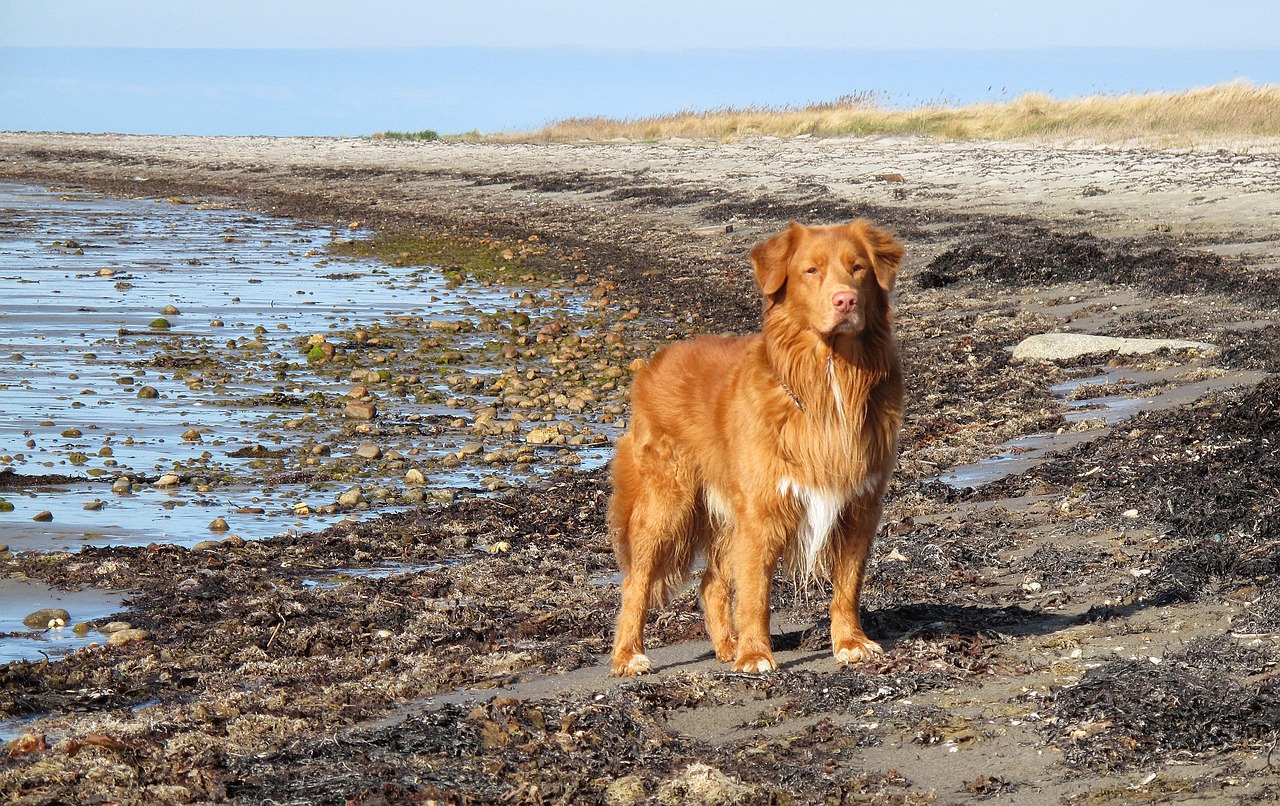Nova Scotia Duck Tolling Retriever

Breed History:
The Nova Scotia Duck Tolling Retriever, often simply called the Toller, originated in the early 19th century in Nova Scotia, Canada. Developed for hunting waterfowl, it earned its name from its unique ability to “toll” ducks, enticing them toward shore by frolicking along the water's edge, a technique inspired by foxes. Once the birds are close, the Toller retrieves them after being shot by the hunter.
The breed was officially recognised in Canada in 1945 and later gained popularity in other countries for its versatility, intelligence, and striking appearance. As the smallest of the retriever breeds, the Toller combines enthusiasm and agility with a love for water and play, making it a skilled working dog and a lively family companion.
Considering adopting a Retriever? Check out our page "How to look after a Retriever" detailing what to consider before adopting and our recommended products.
|
Gender |
Height |
Weight |
|
Male |
48–51 cm |
20–23 kg |
|
Female |
45–48 cm |
17–20 kg |
Size – Medium
Life Expectancy: 12–14 years

Breed Appearance:
The Toller is a medium-sized, athletic retriever with a compact, balanced frame built for agility and endurance. Its dense, water-repellent double coat typically comes in shades of red or orange, often with white markings on the chest, feet, tail tip, or face. The feathering on the legs and tail is moderate but requires upkeep.
It has an intelligent and alert expression, with almond-shaped eyes and well-set ears that frame its wedge-shaped head. The Toller’s bushy tail is often in motion, especially when luring waterfowl. Despite its relatively small size, it has a powerful build and a confident, lively gait.
Breed Type – Family/Hunting:
Originally bred as a hunting companion, the Nova Scotia Duck Tolling Retriever is also an affectionate and energetic family dog. It forms strong bonds with its people and thrives on interaction, play, and attention. Its intelligence and versatility make it suitable for a variety of activities, from field trials and agility to obedience and therapy work.
Though friendly and affectionate, the Toller can be reserved with strangers, often displaying a cautious curiosity rather than immediate sociability. It is not known for being aggressive, but it will alert its family to unusual activity, making it a capable watchdog when needed.

Training:
The Toller is highly intelligent and eager to please, making it a quick learner when provided with consistent, positive training. It responds exceptionally well to reward-based techniques, and early socialisation is key to managing its sometimes reserved nature with unfamiliar people or pets.
Mental stimulation is essential, as boredom can lead to destructive behaviour. Activities like scent work, fetch, agility, and obedience not only provide physical exercise but also engage the Toller’s sharp mind. It thrives in homes where training is ongoing, engaging, and part of the daily routine.
Health & Care:
The Nova Scotia Duck Tolling Retriever is generally a healthy breed with a robust constitution, but like all purebred dogs, it may be prone to certain hereditary conditions. Common health concerns include progressive retinal atrophy (PRA), hip dysplasia, and autoimmune diseases such as Addison’s disease.
Regular veterinary check-ups, a balanced diet, and appropriate exercise can help prevent many issues. Genetic screening from reputable breeders helps reduce the risk of inherited conditions. With proper care, the Toller is a healthy, energetic breed that remains active well into its senior years.

Living Conditions:
The Toller is best suited to homes with space to run and play, though it can adapt to apartment living if given ample exercise and stimulation. It is an active, curious breed that enjoys spending time outdoors and especially loves water.
A securely fenced yard is ideal to prevent roaming, and regular interaction with its human family is essential for its mental well-being. The Toller does not do well in isolation and may develop separation anxiety if left alone for extended periods. Its coat is weather-resistant, making it suitable for a range of climates, though it prefers cooler conditions.
Exercise:
This breed has high energy levels and requires daily physical activity to stay healthy and content. Long walks, jogging, swimming, and structured games like fetch or frisbee are all excellent outlets for the Toller’s energy.
As a working retriever, it enjoys tasks that involve retrieving, agility, or tracking. Without adequate exercise, the Toller may become bored and develop unwanted behaviours. Ideally, it should receive at least an hour of moderate to intense activity each day, along with mental enrichment, to stay satisfied.
Grooming:
The Toller’s medium-length, water-repellent double coat is relatively low-maintenance but benefits from weekly brushing to remove loose hair and prevent matting. During seasonal shedding (spring and fall), more frequent grooming may be necessary to manage the undercoat.
Bathing is only needed occasionally, particularly after swimming or muddy play. Regular ear cleaning helps prevent infections, and nails should be trimmed regularly. Like all breeds, the Toller benefits from routine dental care, such as brushing or dental chews, to maintain oral health.

Advantages:
-
Highly intelligent and trainable, excelling in multiple dog sports and roles
-
Affectionate and loyal to its family, forming close bonds
-
Energetic and playful, making it ideal for active individuals or families
-
Skilled swimmer and retriever with a natural love for water
-
Compact, manageable size for a working retriever
-
Low grooming demands compared to some double-coated breeds
Disadvantages:
-
High energy levels require daily physical and mental stimulation
-
May become anxious or destructive if left alone too long or under-stimulated
-
Can be reserved with strangers without early socialisation
-
Seasonal shedding requires additional grooming
-
Prone to certain genetic health conditions like PRA or autoimmune disorders
-
Needs consistent training and structure to prevent misbehaviour

